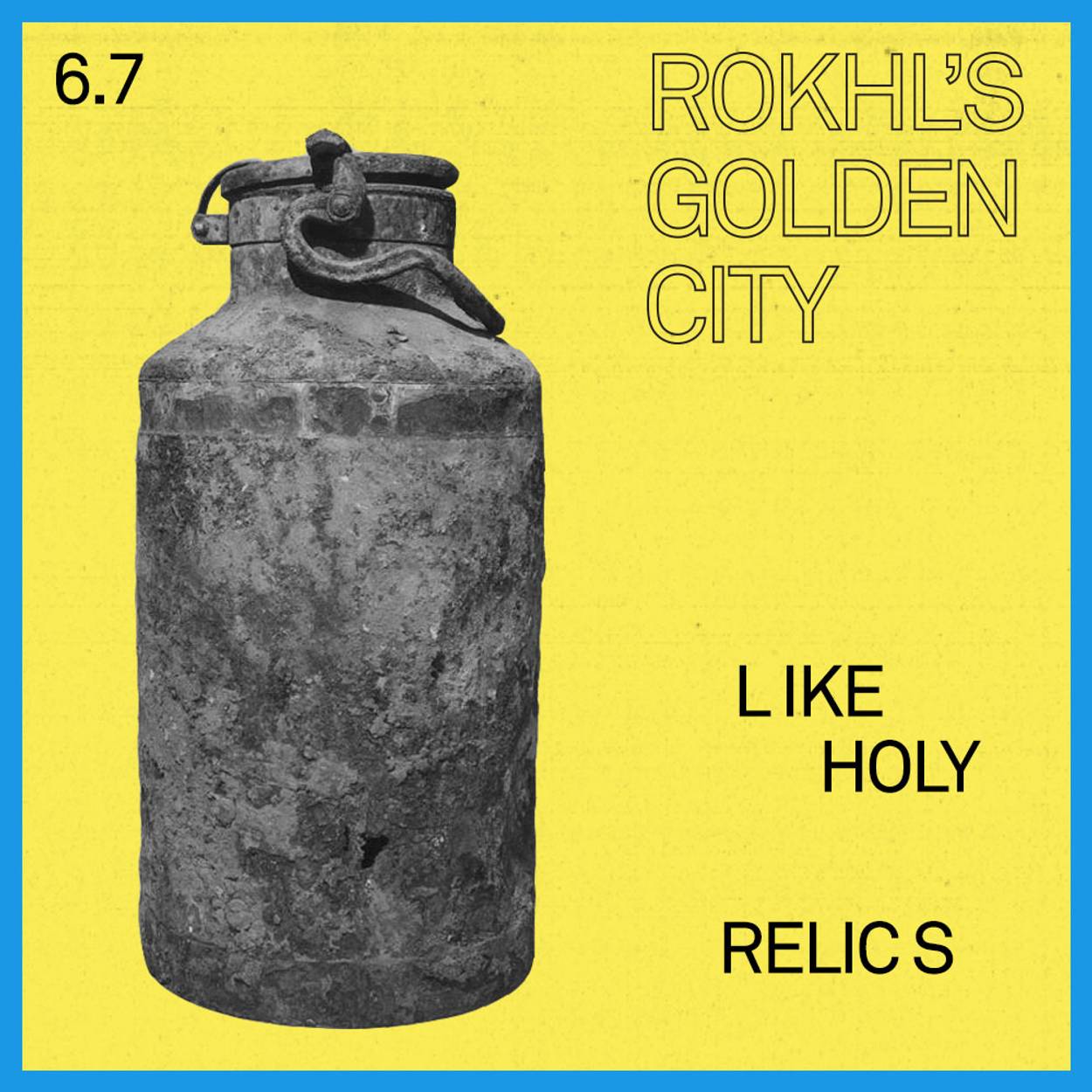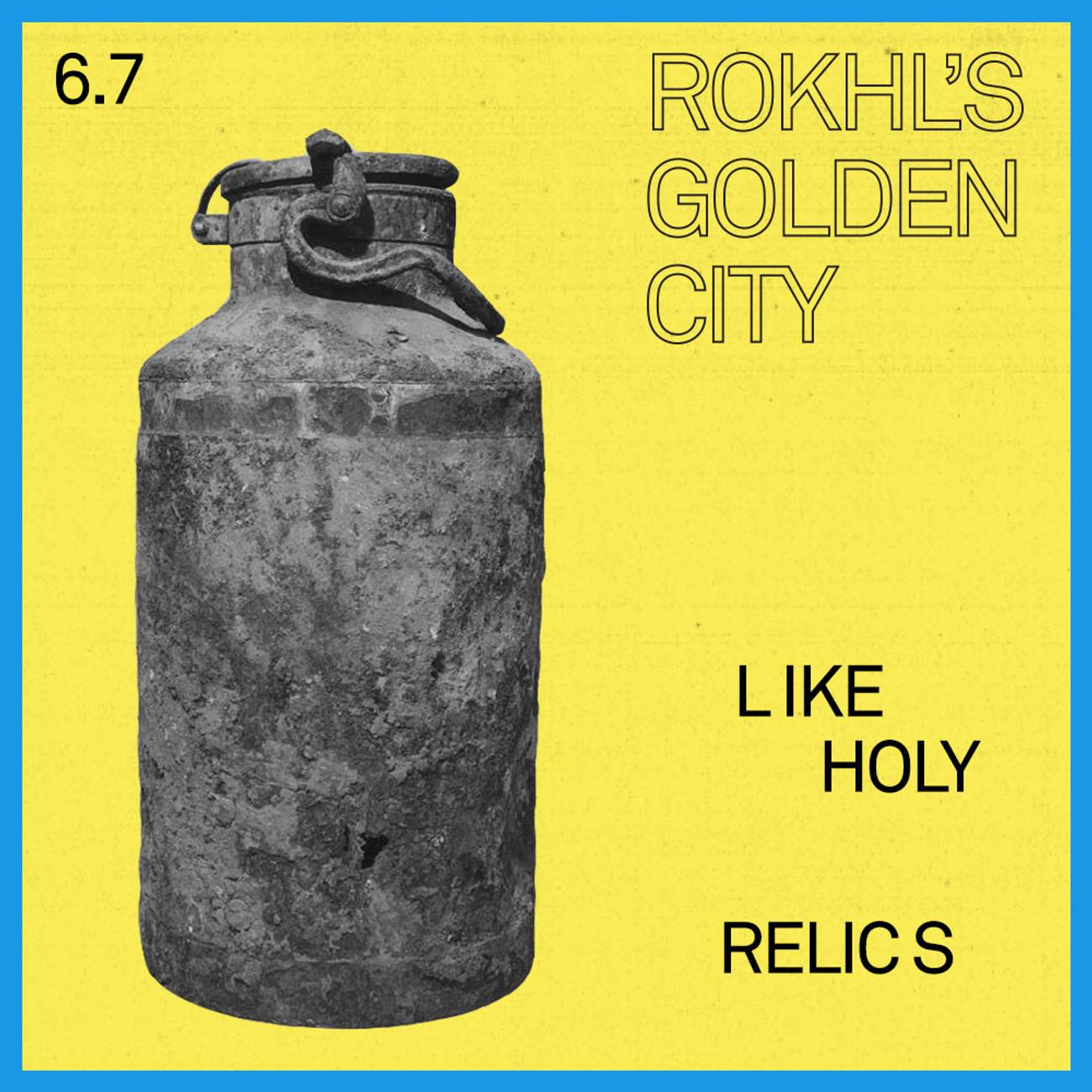Buried History
Tracing two stories of wartime heroism in Warsaw




Are Jews itchier than normal people? I once posed this question on social media and was immediately chastised by someone for implying, khas v’sholem, that Jews are not normal. Now, I’m no expert, but I think reasonable people could disagree on the facts.
Nonetheless, maybe it’s not Jews, maybe it is just me. Last winter I went for a post-club, late-night dinner at a certain Murray Hill Indian restaurant whose name features a certain memorable rhyming pair. I’ve eaten dozens of dosas in my life, but the dosa I ate that night was the only one that immediately broke me out in full-body hives, lasting for almost two weeks.
Yidishe mazl, Jewish luck. For more than 20 years I’ve suffered from what I’ve come to think of as stochastic histamine intolerance. And an errant dosa isn’t the only thing with the potential to temporarily derail my life. My body’s reaction to bug bites has also gotten much worse over the years. Admittedly, it’s not the worst thing in the world, but enough to make summer the most miserable season of the year. So, when I travel, I always have a tube of cortisone cream with me, as well as Benadryl, because you never know.
My caution proved well founded when I traveled to Poland at the end of May. I was in Warsaw for “Bridging Divides: Rupture and Continuity in Polish Jewish History,” a conference co-sponsored by Yeshiva University, the Yale Fortunoff Video Archive for Holocaust Testimony, and the Jewish Historical Institute in Warsaw. I found myself in the former capital of Yiddish culture with some free time before the opening of the conference. My new friend Sam Glauber-Zimra (also in town for the conference) invited me to join him on a visit to the Jewish cemetery on Okopowa Street. I jumped at the invitation.
The cemetery was established in 1806 and is home to something like 200,000 graves, as well as a number of mass graves. It is an enormous, spectacular, overwhelming Jewish space and (eternal) home to an array of Warsaw’s diverse Jewish population, from the highly Polonized to Hasidic rebbes and more. Esther-Rokhl Kaminska (grande dame of the Polish Yiddish stage) and Ludwig Zamenhof (creator of Esperanto) are just two of the cultural notables buried there, as are a number of Bundist fighters. Among its gravestones are masterpieces carved by Abraham Ostrzega, a sculptor who died in Treblinka. His matseyves (gravestones) at the cemetery are some of the few of his works that have survived.
If you’re like me, your first stop will be the ohel (covered monument) designed by Ostrzega, where the towering Yiddish cultural figures Y.L. Peretz, Sh. Ansky, and Yankev Dinezon are buried together. My friend Sam was kind enough to indulge my request to play a snippet of Peretz’s “Monish” while we paid our respects. Sam was there to find a few specific Hebrew writers, helped along by an incredibly useful online database that can direct you to the particular coordinates of almost any grave you’re seeking.
At one point, Sam and I found ourselves at the border between sections, where the terrain descended a couple feet and the weeds suddenly became wild and reached knee height. Sam scampered down the uneven looking stone steps while I hesitated like the wuss I am. After a moment of yelling at myself for being so cautious, I descended down into the grass and immediately regretted it. Sam was wearing jeans and heavy socks. I was in a chic pair of cropped linen trousers. All of a sudden, what felt like hundreds of tiny biting insects were attacking my lower legs. I ran back up to examine the damage. Painful welts were forming already.
But no insects were to be seen. I took some photos of the greenery for reference and tried to ignore my inflamed shins. Later that night, after slathering on the cortisone cream (see?), I found myself scrolling Instagram and enjoying jet-lag-induced insomnia. To my great surprise, the Ashkenazi Herbalism account had just posted a photo of the exact plant seen at the cemetery! It was stinging nettle, or kropeve. The leaves of the nettle are covered with tiny silicate needles ready to pump you full of irritating compounds. The Ashkenazi Herbalism post described a conversation with a Holocaust survivor from Latvia, who recalled a local practice of using stinging nettles to treat arthritis. Apparently, using nettles for various bodily pains goes back to ancient times, as well as to the Jewish settlements of Ashkenaz. Yidishe mazl: I got free treatment for a disease I don’t have.
This was my first visit to Warsaw, and for me, two narratives of wartime heroism defined my trip: the Oyneg Shabes archive and the fighters of the Warsaw Ghetto Uprising. The “Bridging Divides” conference was held at the Jewish Historical Institute on Tlomackie Street, home to the Oyneg Shabes archive and associated exhibition. Before the war, the building housed the Main Judaic Library. During the war, it was used by Emanuel Ringelblum and his associates to carry out the highly secretive work of coordinating the Oyneg Shabes collective.
Tlomackie Street is still well known today to those immersed in the Yiddish world, as it was one of the centers of Jewish cultural life. It was where the Yiddish Writer’s Union was located, as well as the Great Synagogue (now the site of a monstrous blue glass skyscraper next to the Jewish Historical Institute).
The conference’s opening speech was given by Samuel Kassow, author of the definitive history of Oyneg Shabes, Who Will Write Our History. Kassow is not only a giant in the field of Holocaust historiography but also an incredibly moving speaker. Building on the conference theme of rupture and continuity, he reminded us that the ghettos weren’t just antechambers to death, they were also Jewish communities, and need to be studied as such.
The Warsaw Ghetto was demolished by the Germans in 1943, after the uprising. Material traces of its pre-war existence are extremely hard to find. The JHI building suffered severe damage, but enough of its “bones” remained to be rebuilt after the war. Its terrazzo floors are original, and burn marks across the floor attest to the violence it saw during the war.
Upstairs, a beautiful exhibition space has been created to tell the story of the Oyneg Shabes archive and its members. The famed milk cans are there, exhibited like holy relics, in a softly lit nook. Another large room is filled with long glass cases, in which visitors can see selected original documents collected by the Oyneg Shabes members, such as handwritten Yiddish testimony regarding Treblinka’s horrors, made by Dawid Nowodworski, who had miraculously escaped the camp and made his way back to Warsaw.
Not far from the JHI, a new monument has been erected at the site where the first cache of Oyneg Shabes documents was excavated in 1946. It’s a series of engraved black granite slabs, leading to hole in the ground, covered by a transparent box. You can see straight down, imagining yourself into that moment, when the surviving members of Oyneg Shabes threw themselves relentlessly into the project of recovering the archive.
It was only after the closing of the conference that I immersed myself in the former Ghetto’s other narrative: that of the heroic fighters of the uprising. During the uprising, the leaders of the Jewish Combat Organization (ZOB) sheltered in a bunker at Mila 18. Today, there is a park with a memorial at the site. I was relieved to find it empty that afternoon. Under a peaceful blue sky, amid the lush green buzz of late spring, I climbed the small hill at its center. After spending some moments reading the Yiddish inscription on the memorial boulder, I sat on its steps and sobbed for the first time since I had arrived.
In 1962, the Polish government announced plans to build a road through the cemetery on Gesia Street (now Okopowa Street). After much outcry, the plans were canceled a few months later. The cemetery escaped the war with relatively minor damage. Two decades later, it escaped the powerful machinery of Warsaw’s post-war redevelopment. Today, the cemetery is still in use, attesting to the continuity of Warsaw’s Jewish population.
When the Nazis invaded, they destroyed the cemetery’s records. What remained were the graves themselves. The cemetery became both archive and monument. Over the past two decades, new technology and digital tools have allowed researchers to create massive databases of the cemetery’s residents, in effect re-creating the records destroyed in the war, making them available to anyone, anywhere in the world.
Ironically, the most comprehensive site of pre-war Warsaw Jewish life is to be found there, in a place of the dead. And though we now have tools to make “virtual” visits from the comfort of home, I would encourage anyone who feels connected to Jewish Warsaw to visit, and plan to spend at least a couple hours exploring its massive grounds. The cemetery on Okopowa Street is no mere graveyard, but a living, liminal space, a bridge across time, open to any and all who wish to speak with the dead.
MORE: There’s still a little time to register for the Warsaw-based 20th International Summer Seminar in Yiddish Language and Culture, running from June 27 to July 15. The seminar offers a wide range of virtual classes, from beginner to advanced. They are also offering free tuition to students from Ukraine. Go to their website for more details.
ALSO: Workers Circle will host the world premiere of Murdered Poetry, a film featuring songs with lyrics by Soviet Yiddish poet Itzik Feffer, music by Zhenya Lopatnik, and an interview with Professor Gennady Estraikh. Feffer was a member of the Jewish Anti-Fascist Committee and was later murdered on Stalin’s order. Murdered Poetry explores how the JAFC was persecuted by the Soviet government and why it is still relevant today. June 12, register here ... The Polin Museum in Warsaw will present a book talk, “Women Writing Jewish Modernity.” Allison Schachter (co-translator of Golden City pick From the Jewish Provinces) will discuss her new book, Women Writing Jewish Modernity, 1919–1939 in conversation with Anita Norich, Karolina Szymaniak, and Anastasiya Lyubas. Online, June 12. More information here…In honor of Pride Month, the Workers Circle will present “The Poetry of Cultural Re-Creation: A conversation with Irena Klepfisz on Jewish and Gender Identity.” Wednesday, June 23, 7 p.m. Register here ... SOAS Library at University of London will host “Rediscovered Stencl,” an exhibition launch and music workshop. UCL holds the papers of Yiddish poet A.N. Stencl, and this event celebrates its complete digitization. Friend of the column Polina Shepherd will present a singing workshop and performance. In person at SOAS, June 29. RSVP by June 20 to [email protected] … Registration is open for a unique, three-day workshop called “The Art of the Jewish Book.” Jointly offered by YIVO and the Center for Book Arts, sessions will take place at both locations. The workshop is pricey, but I don’t think I’ve ever seen something like this, as it combines scholarship and hands-on artistic work. Sessions will be co-led by a literary scholar and an artist, and students will get to make their own prints. July 11-14. More information here …
Rokhl Kafrissen is a New York-based cultural critic and playwright.